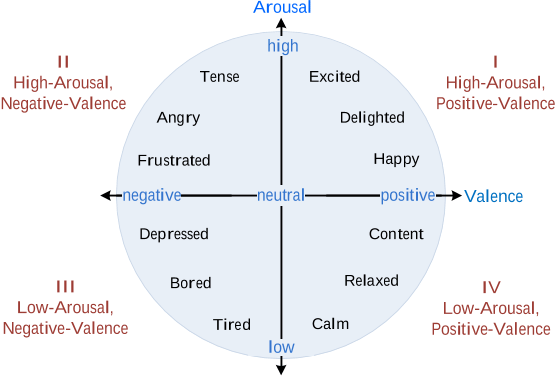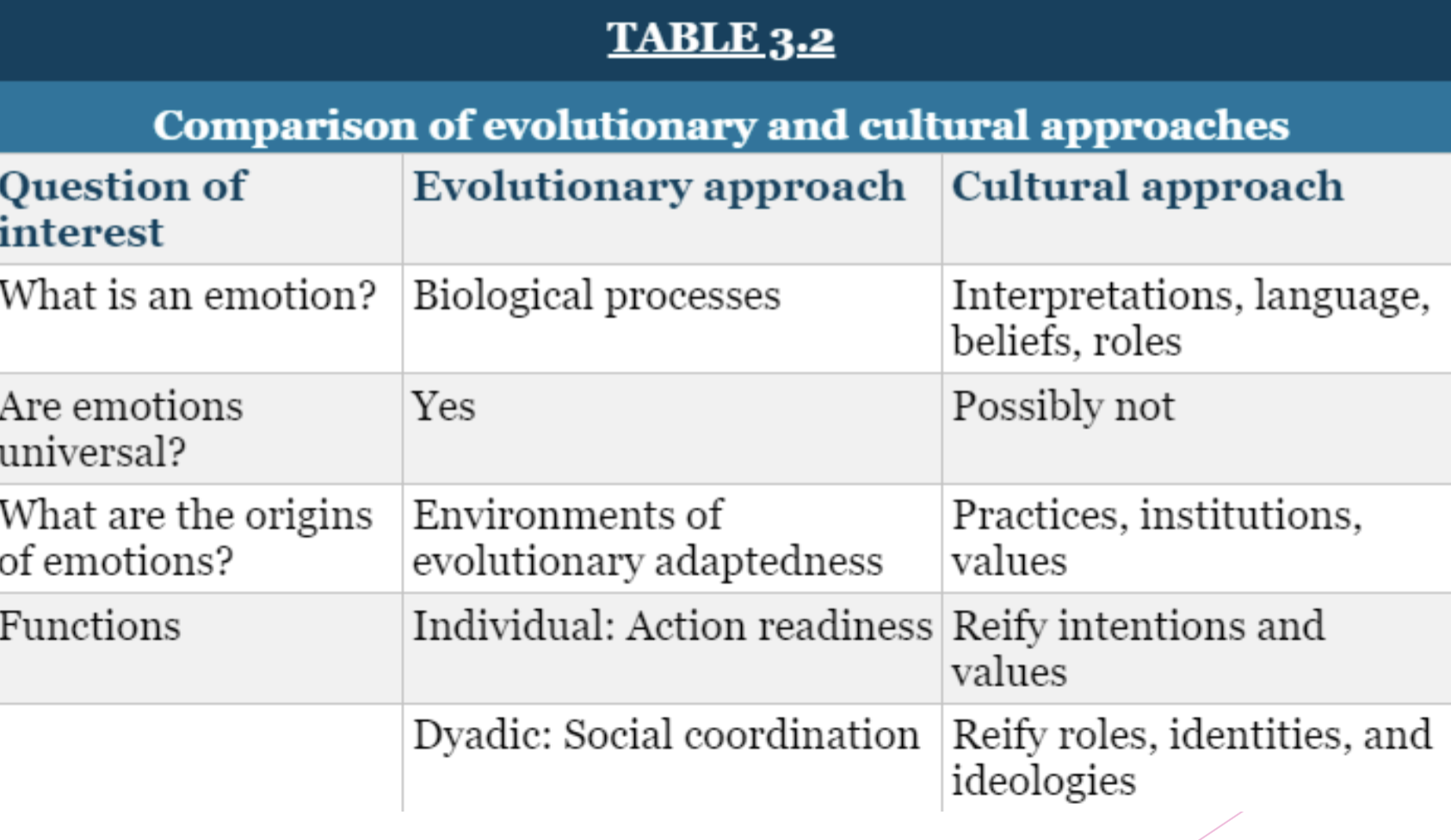Chapter 3 - Emotional Intelligence: Culture & Emotions
1/16
There's no tags or description
Looks like no tags are added yet.
Name | Mastery | Learn | Test | Matching | Spaced |
|---|
No study sessions yet.
17 Terms
Culture
Behaviors, ideals, and traditions shared with a group of people that are often passed from one generation to another
Leads to having certain norms
Behaviors that are socially accepted
Example: Greetings by handshake or kissing
Self Construals - Independent Self
Person in question views themselves as individualistic
Defined by distinctness with unique traits and sense of identity
Behavior is typically stable over time
Self Construals - Interdependent Self
Person in question views themselves as someone dependent on others
Defined by their connections with other people
Their decision making with each scenario isn’t fixed
Principles of Emotion According to Culture
Emotions are interpersonal
Emotions are caused by external events, which include people and relationships
Emotions are active
Emotions are the actions
In other cultures, feeling emotions are verbs. However the english language makes emotions a passive thing
Emotions are value based
Emotions depend on society’s values
Example: In the West it is okay to express happiness, however in Ifaluk culture it is considered boastful
PANAS
Positive and Negative Affect Scale: A scale typically used in literature to measure emotions using two sub scales
PANAS-PA Items: interested, excited, strong, enthusiastic, proud, alert, inspired, determined, attentive, active
PANAS-NA Items: distressed, upset, guilty, scared, hostile, irritable, ashamed, nervous, jittery, afraid
Criticisms: Doesn’t include basic emotions, such as sad and happy
Core Affect Theory
The theory that emotions are dimensional and aren’t on distinct labels
Cultures might view emotions in different places on the graph
Divided into valence or arousal
Valence: Positive or Negative
Arousal: Intensity
Criticisms:
Culture is not always needed to be learned
One can perceive emotions even without labels

Individualism
Goals are centered around the self
Beliefs are most common in western cultures
Prioritize personal success
Collectivisim
Goals are centered around peers
Most common in eastern cultures
Prioritize group success
Affect Valuation Theory
Theory about how people view emotions
Highly suggested that the culture one grew up in determines the perception of certain emotions
Studies showed that those from individualistic cultures are more likely to value and express emotions with high arousal
Emotional Complexity
The simultaneous experience of contradictory emotions
Emotion Potential
Hypothetical if people from different cultures are put in certain situations express/ experience universal emotions
Emotion Practice
How would hypothetical people express/ experience the emotions when put into that situation
Cultural Differences in Emotion
People in individualist cultures tend to report emotions with higher arousal than people in collectivist cultures
Examples include:
American students reported that they rated anger situations the highest, while Japanese students reported that they rated shame situations the highest
American students reported more socially disengaging emotions (pride, frustration, anger), while Japanese students reported more socially engaging emotions (sympathy, shame, respect)
Conclusion: In the West, emotions tend to be centered around the self. However, in the East, emotions tend to be centered around their surroundings as their feelings seem to have a lower arousal
Tsai et al Study
A study that supports Core Affect Theory. The study took people from different cultures and put them into varying situations to measure their ideal effect and actual effect
Figure 1 had European Americans and Asian Americans rate the ideal high arousal positive (HAP) situation and the ideal low arousal positive (LAP) situation
Both reported to have rated LAP lower because it is not considered ideal within cultures (both influenced by America’s Western Ideals)
European Americans rated LAP even lower
Asian Americans rated LAP not as much lower
Figure 2 had the same groups as before, and a control group (Hong Kong Chinese) to find out how much they actually experienced those
Overall, the Asians rated LAP experience significantly higher than European Americans
Eastern ideals also influence them
Conclusion: The culture you predominantly live with is more likely to value different things. Asian Americans in the ideal effect graph don’t rate LAP as high as HAP because they grew up in American culture. However, they will experience LAP more strongly instead because it is where their core values lie in

Mauss et al Study
A study that was conducted with European Americans and Asian Americans to measure their anger when a rude teacher comments on the students’ mistakes
Figure 1: Displays the amount of students who felt angry after the event
More European American students were shown to be angry than Asian American students
Figure 2: Displays how intense their emotions were after the event
European American students were shown to have higher emotional intensity than Asian American students
Conclusion: European American students are shown to be more angry because as people who likely have individualistic beliefs, they will feel anger freely rather than Asian American students, who are more likely to be influenced by collectivistic beliefs and won’t feel emotions with high arousal as much

Ford et al Study (2015)
A study that shows the correlation between motivation to pursue happiness, socially engaged definition of happiness, and wellbeing
Higher numbers between each part are equal to how much it is connected

Similarity Between Cultural and Evolutionary Approaches
Emotions are seen as different things when viewed through cultural and evolutionary lenses
Cultural: emotions regulate how society functions
Evolutionary: emotions focus on our survival
Both agree that emotions are adaptive and are used for communication
